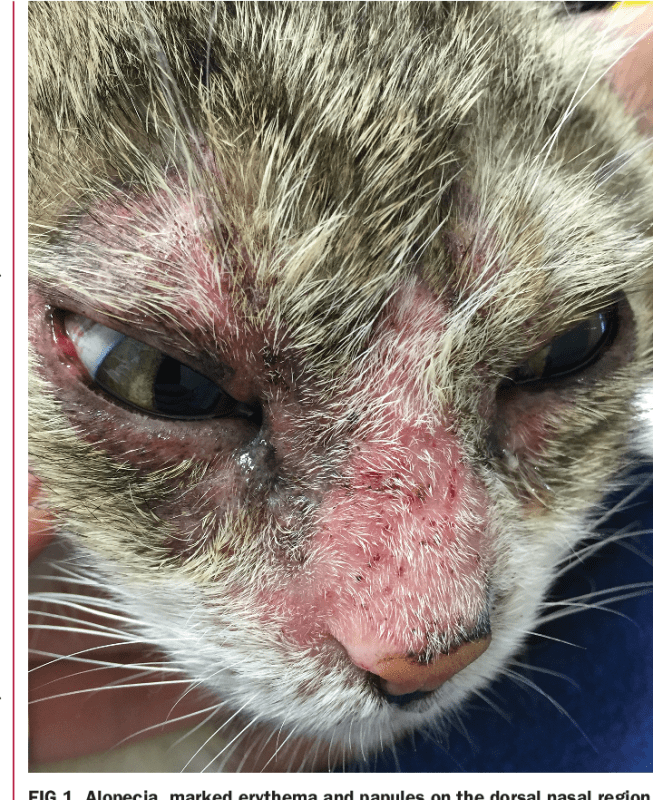
Subcutaneous tick in cats: how to detect and treat demodicosis
Demodicosis in cats is a disease caused by microscopic mites Demodex gatoi and Demodex cati. These are scabies mites, so demodicosis is also called red scabies in the common people. How to understand that the pet has become infected, and start treatment in time?
Demodicosis is a disease that affects various animals, including humans. But the disease is provoked by different types ticks, therefore, feline demodicosis is not contagious to humans and other pets. Veterinarians note that demodicosis in cats is not very common, but its contagiousness and duration of treatment make the disease very dangerous.
Contents
Ways of infection with demodicosis
In the body of a cat, Demodex cati exists permanently. They live in the hair follicles and normally do not cause complications. But with a decrease in immunity after other diseases or against the background of a lack of vitamins, demodexes provoke the development of demodicosis. Demodex gatoi, in turn, live on the skin and are transmitted from one individual to another through close contact.
The tick is tenacious enough that the owner of the cat can bring it on outdoor shoes or outerwear. After entering the body of an animal, the tick begins its life cycle, which lasts about a month.
At particular risk are cats that:
- suffered serious illnesses that provoked low immunity;
- have reached old age;
- have been ill with skin diseases;
- genetically predisposed to demodicosis, such as Siamese;
- are under stress;
- are kept in unsuitable conditions and do not receive enough vitamins and minerals. Also, the demodex mite in cats is a particular danger to kittens and pregnant individuals.
Demodicosis symptoms
The subcutaneous tick in cats usually lives in places where the skin is thinnest – on the nose, ears, paws, around the eyes and mouth. Depending on how much demodicosis has spread to the skin, there are:
- localized demodicosis,
- generalized demodicosis.
The symptoms of demodicosis in a cat are as follows:
- redness and swelling,
- foci of inflammation on the skin,
- severe itching,
- the formation of pustules with blood or pus,
- crusts,
- pet lethargy,
- stress and restless behavior
- refusal of food
- severe weight loss.
It is important to contact a veterinarian immediately after the first signs of demodicosis appear. Some symptoms, such as being stressed, may be signs of other health problems.
Diagnosis and treatment
Diagnosis of demodicosis includes several stages:
- examination of the history of diseases of the cat,
- examination of the pet by a doctor,
- collection of skin scrapings for analysis,
- microscopic examination.
After confirming the diagnosis, the treatment is directed to get rid of the tick, through complex therapy. It may include ointments, intramuscular injections, medicated shampoos. During and after treatment it is important:
- enhance the immunity of the animal,
- choose the right food
- isolate the infected pet from other cats.
Self-treatment can cause complications, so it is important to immediately contact a veterinary clinic.
Preventive measures
To exclude infection with demodicosis, it is necessary:
- limit the free range of the cat and her contact with other animals,
- get vaccinated regularly and undergo check-ups with specialists,
- treat the cat’s habitat from parasites in a timely manner,
- wash hands after the street and before contact with a domestic cat,
- clean street clothes and shoes where the cat can’t get them.
In addition, you need to remember that strong immunity is the key to the health and longevity of any pet.
See also:
- Why is regular veterinary check-ups important?
- Feline immunodeficiency virus: causes, symptoms, prognosis
- The most common cat diseases: symptoms and treatment





